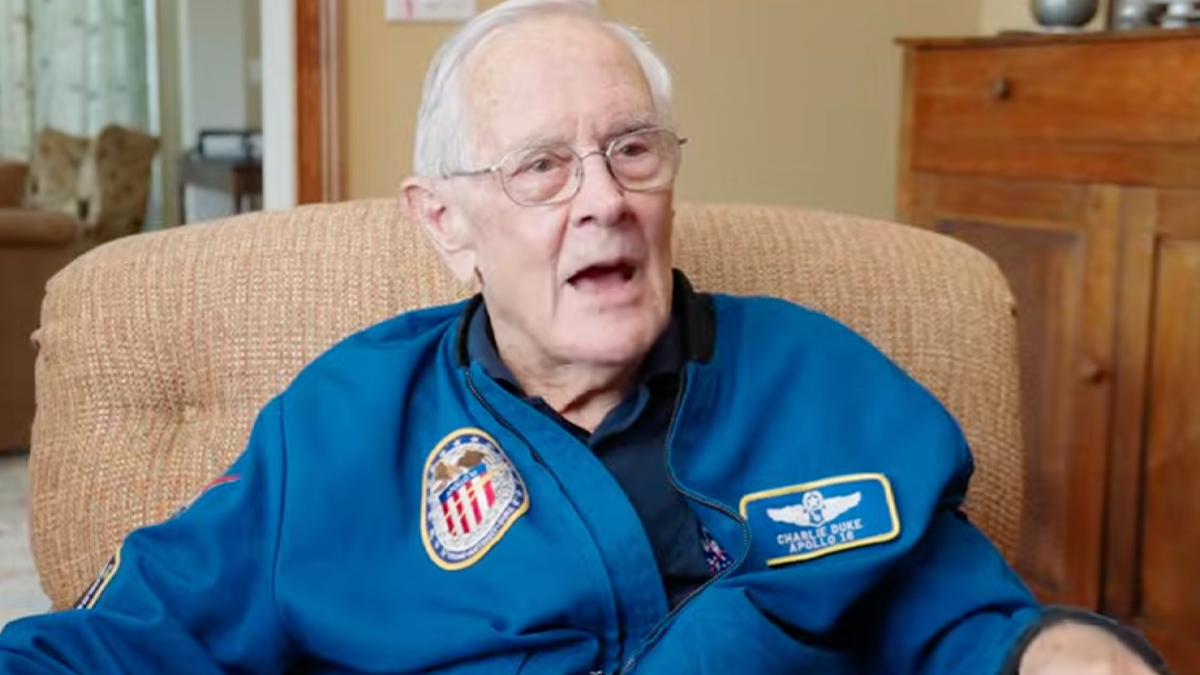In a shocking revelation that has sent ripples through the scientific community and beyond, Charles Duke, the youngest astronaut to walk on the moon, has disclosed extraordinary details about a mysterious object he witnessed during the Apollo 16 mission. Before his death, Duke broke a decades-long silence, claiming that NASA has hidden crucial evidence of an unidentified presence on the lunar surface.

On April 16, 1972, Duke and his fellow astronauts landed on what was thought to be a barren and inhospitable region of the moon. However, Duke’s recent statements suggest that this perception was far from reality. He described a peculiar, reflective object located at the edge of a large impact crater, unlike any rock previously documented in NASA’s archives. This revelation has ignited a firestorm of interest, with many now questioning the integrity of the Apollo program’s historical records.
Duke’s admission marks the first time an astronaut has publicly acknowledged encountering an object with a distinct geometry during a lunar mission. He recounted how he meticulously recorded the location and captured continuous photographs of the anomaly, which was later downplayed in official reports. “I saw it. I recorded it. And I know NASA preserved all the evidence,” Duke stated emphatically during a public meeting.
The implications of Duke’s revelations extend far beyond mere curiosity. His claims challenge the very foundation of our understanding of space exploration and raise urgent questions about what else may have been concealed from the public. Experts have analyzed the Apollo 16 samples, noting that the object exhibited a highly reflective surface and an unusual texture, distinct from the basaltic rocks collected during the mission.

Duke’s insistence on the veracity of his experiences adds weight to his assertions. He has been known for his adherence to factual reporting throughout his career, making his claims all the more compelling. “I do not discuss hypotheses. I only present the facts of my own eyes,” he stated, emphasizing the importance of his firsthand account.
In a chilling twist, Duke also recounted a mysterious signal he encountered during the Apollo 11 mission, which he described as a “complete departure from the regular signals.” This unexplained audio anomaly has remained undocumented in public records, further deepening the intrigue surrounding his experiences.
As Duke’s health declined in his later years, he prepared to leave behind a legacy that defies conventional space narratives. He recorded a 14-minute audio message detailing his encounters and the pressures he faced to remain silent. “I’m not the only one who knows, but I’m the last one left sober enough to confirm it,” he declared, underscoring the urgency and gravity of his revelations.

Duke’s family has chosen to keep his recordings and notes private, leaving the world to ponder the implications of his findings. His final message hints at a broader truth about humanity’s exploration of the cosmos and the secrets that may still lie hidden on the moon. “Not everyone has the opportunity to see what I saw,” he wrote, a poignant reminder of the mysteries that continue to elude us.
As the world grapples with these revelations, the question remains: what else has been hidden from us in the annals of space exploration? Charles Duke’s last breaths may have opened a Pandora’s box of unanswered questions, and the quest for the truth may be only just beginning.





